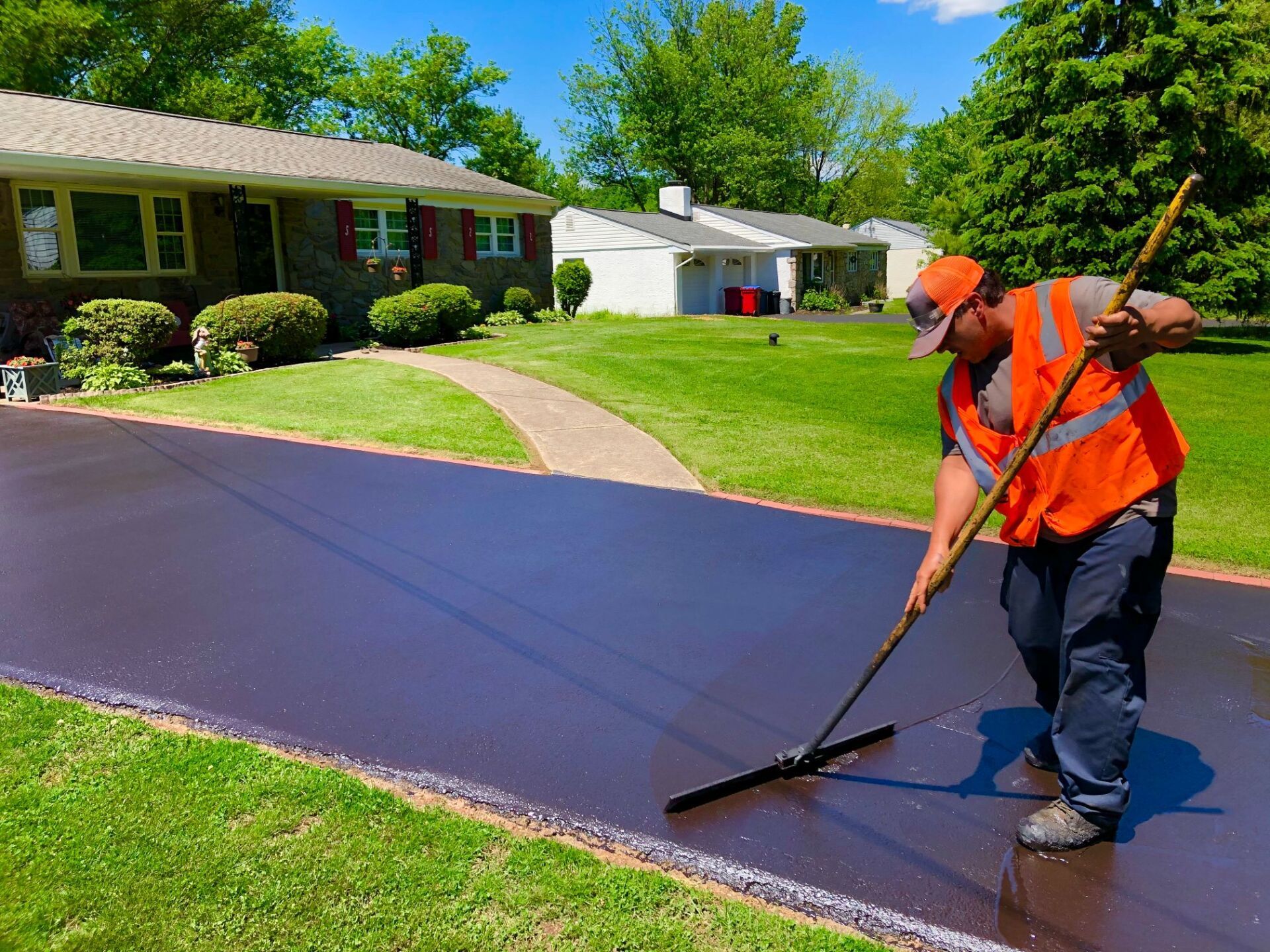Transform Your Property's Aesthetics: Commercial Car Park Paving and Asphalt Sealing Solutions
Transform Your Property's Aesthetics: Commercial Car Park Paving and Asphalt Sealing Solutions
Blog Article
Warm Mix Asphalt: A Sustainable Remedy for Sidewalk
Hot Mix Asphalt (HMA) has arised as a leading sustainable selection for pavement services, supplying a myriad of environmental benefits and ingenious innovations. As the need for green building practices expands, exploring the subtleties of HMA's sustainability can provide important insights into the future of pavement options.
Ecological Advantages of Warm Mix Asphalt

Moreover, Hot Mix Asphalt helps to minimize city warm island results. Its dark color absorbs sunshine, minimizing the amount of heat mirrored back into the atmosphere compared to lighter-colored sidewalks. This can reduce ambient temperatures in city locations, lowering the need for air conditioning and ultimately reducing power consumption.
Furthermore, Warm Mix Asphalt adds to enhanced stormwater management. Its permeable nature allows water to infiltrate the pavement and recharge groundwater materials, reducing drainage and the risk of flooding. These ecological advantages make Hot Mix Asphalt a sustainable selection for paving freeways and roadways.
Energy Efficiency in HMA Manufacturing
Is power effectiveness a critical aspect in the manufacturing of Hot Mix Asphalt (HMA)? Energy plays a substantial function in the manufacturing of HMA, influencing both expense and ecological sustainability. One essential facet of power efficiency in HMA production is the use of warm mix asphalt (WMA) modern technologies.
Additionally, developments in plant innovations have actually led to more energy-efficient HMA production processes. By maximizing power usage in HMA production, the industry can minimize its carbon footprint while keeping premium sidewalk products.
Recyclability of Hot Mix Asphalt
The recyclability of Warm Mix Asphalt (HMA) is a pivotal aspect of its sustainability and long-lasting ecological effect. HMA is one of one of the most recycled materials in the USA, with over 100 million tons of recovered asphalt sidewalk (RAP) being recycled annually in brand-new pavement building. Reusing HMA supplies a number of environmental benefits, such as minimizing the requirement for virgin products, decreasing power consumption throughout production, and decreasing the quantity of waste sent out to land fills.
The process of recycling HMA involves grating the existing pavement, squashing it right into smaller items, and mixing it with new aggregate and asphalt binder to develop a recycled mix. In general, the recyclability of HMA plays a significant duty in promoting lasting methods within the pavement industry.
.png)
Long-Term Efficiency of HMA
Asphalt sidewalks demonstrate resilience and strength over a prolonged duration, mirroring the long-term efficiency of Hot Mix Asphalt (HMA) The durability of get more HMA can be credited to its ability to withstand rush hour tons, extreme weather, and the results of aging. Research studies have actually shown that properly designed and effectively built HMA sidewalks can last for 20 years or more with normal upkeep. The trick to making the most of the long-lasting efficiency of HMA lies in using premium products, adhering to finest methods in construction, and executing reliable upkeep methods. Appropriate water drainage, regular inspections, and prompt fixings are important for maintaining the structural integrity of HMA sidewalks with time. Additionally, innovations in HMA technology, such as making use of polymer-modified check here binders and cozy mix asphalt, have further enhanced the resilience and durability of HMA pavements. By prioritizing high quality construction and maintenance practices, HMA continues to confirm itself as a lasting and cost-efficient option for long-lasting sidewalk facilities.

HMA: Resilience and Sustainability
Showing both toughness and sustainability, Warm Mix Asphalt (HMA) has actually come to be a cornerstone in the building of long-lasting pavement infrastructures - angled parking. HMA's durability originates from its capability to stand up to hefty tons, harsh weather, and high traffic volumes, making it a reliable selection for roadways, highways, and airport runways. The make-up of HMA, which commonly consists of accumulations, binder, and filler, plays a crucial duty in boosting its durability and resistance to tear and wear
Furthermore, HMA's sustainability depends on its recyclability and energy-efficient manufacturing procedure. The capacity to reuse reclaimed asphalt sidewalk (RAP) in new HMA mixtures decreases the need for virgin products and Discover More decreases the environmental effect of pavement building and construction and maintenance. In addition, the energy efficiency of producing HMA exists in its reduced blending temperature levels contrasted to various other sidewalk products, resulting in decreased energy consumption and greenhouse gas discharges.
Verdict
In verdict, hot mix asphalt (HMA) uses a sustainable solution for sidewalk with its environmentally pleasant characteristics. HMA's recyclability, energy efficiency in manufacturing, and long-term resilience make it a green option for roadway building and construction.
HMA is one of the most recycled materials in the United States, with over 100 million lots of recovered asphalt sidewalk (RAP) being recycled every year in brand-new pavement construction.The process of recycling HMA includes milling the existing sidewalk, squashing it into smaller items, and blending it with brand-new aggregate and asphalt binder to develop a recycled mix.Asphalt sidewalks show durability and resilience over an extended period, reflecting the lasting efficiency of Warm Mix Asphalt (HMA) In addition, innovations in HMA modern technology, such as the use of polymer-modified binders and warm mix asphalt, have actually additionally improved the sturdiness and long life of HMA pavements. The ability to recycle reclaimed asphalt sidewalk (RAP) in brand-new HMA mixtures minimizes the need for virgin materials and minimizes the ecological effect of pavement building and maintenance.
Report this page